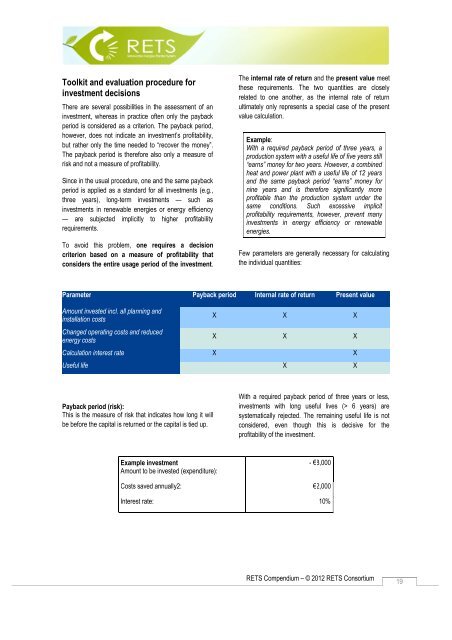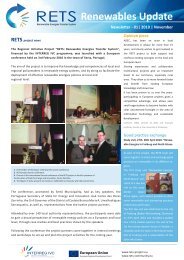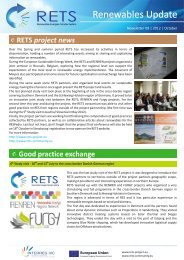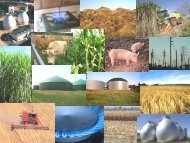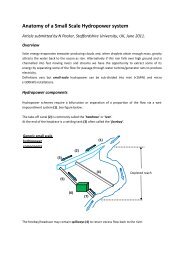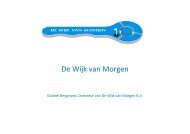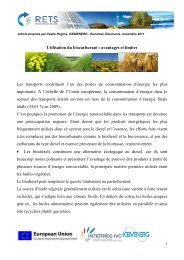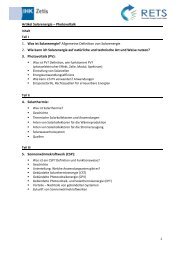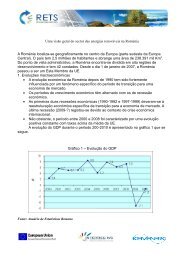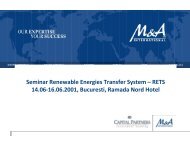Promoting renewable energies - RETS Project
Promoting renewable energies - RETS Project
Promoting renewable energies - RETS Project
You also want an ePaper? Increase the reach of your titles
YUMPU automatically turns print PDFs into web optimized ePapers that Google loves.
Toolkit and evaluation procedure for<br />
investment decisions<br />
There are several possibilities in the assessment of an<br />
investment, whereas in practice often only the payback<br />
period is considered as a criterion. The payback period,<br />
however, does not indicate an investment’s profitability,<br />
but rather only the time needed to “recover the money”.<br />
The payback period is therefore also only a measure of<br />
risk and not a measure of profitability.<br />
Since in the usual procedure, one and the same payback<br />
period is applied as a standard for all investments (e.g.,<br />
three years), long-term investments — such as<br />
investments in <strong>renewable</strong> <strong>energies</strong> or energy efficiency<br />
— are subjected implicitly to higher profitability<br />
requirements.<br />
To avoid this problem, one requires a decision<br />
criterion based on a measure of profitability that<br />
considers the entire usage period of the investment.<br />
The internal rate of return and the present value meet<br />
these requirements. The two quantities are closely<br />
related to one another, as the internal rate of return<br />
ultimately only represents a special case of the present<br />
value calculation.<br />
Example:<br />
With a required payback period of three years, a<br />
production system with a useful life of five years still<br />
“earns” money for two years. However, a combined<br />
heat and power plant with a useful life of 12 years<br />
and the same payback period “earns” money for<br />
nine years and is therefore significantly more<br />
profitable than the production system under the<br />
same conditions. Such excessive implicit<br />
profitability requirements, however, prevent many<br />
investments in energy efficiency or <strong>renewable</strong><br />
<strong>energies</strong>.<br />
Few parameters are generally necessary for calculating<br />
the individual quantities:<br />
Parameter Payback period Internal rate of return Present value<br />
Amount invested incl. all planning and<br />
installation costs<br />
Changed operating costs and reduced<br />
energy costs<br />
X X X<br />
X X X<br />
Calculation interest rate X X<br />
Useful life X X<br />
Payback period (risk):<br />
This is the measure of risk that indicates how long it will<br />
be before the capital is returned or the capital is tied up.<br />
With a required payback period of three years or less,<br />
investments with long useful lives (> 6 years) are<br />
systematically rejected. The remaining useful life is not<br />
considered, even though this is decisive for the<br />
profitability of the investment.<br />
Example investment<br />
Amount to be invested (expenditure):<br />
- €8,000<br />
Costs saved annually2: €2,000<br />
Interest rate: 10%<br />
<strong>RETS</strong> Compendium – © 2012 <strong>RETS</strong> Consortium<br />
19


